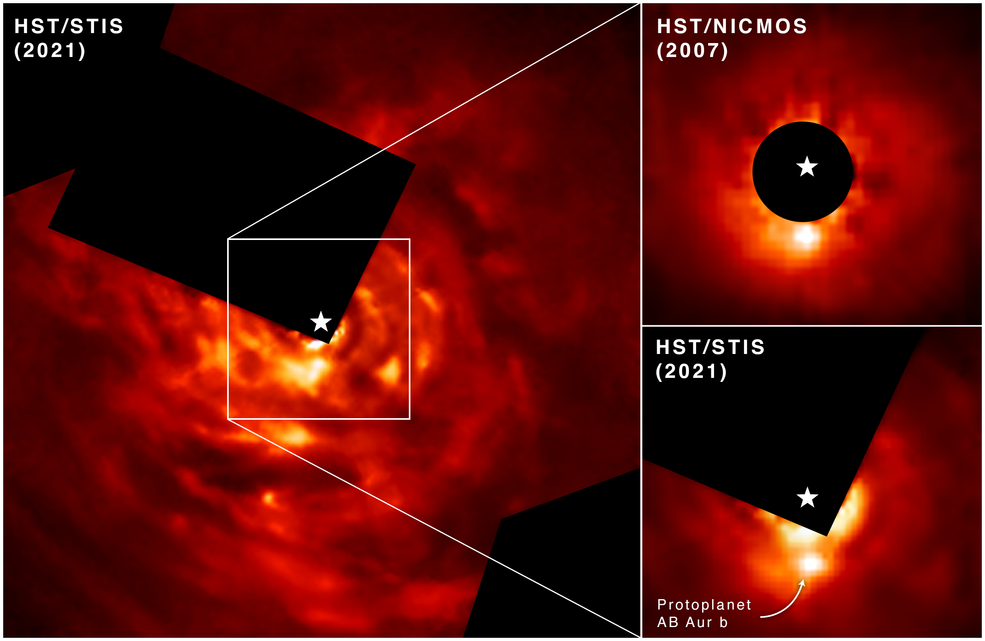Using the Hubble telescope, astronomers photographed the cradle of the forming exoplanet AB Aur b, similar to Jupiter. The images confirm the theory that such objects are formed as a result of disk instability.

The newborn exoplanet orbits the protostar AB Aur, located at a distance of 531 light-years from Earth in the direction of the constellation Auriga. It is a gas giant whose mass is nine times that of Jupiter. The orbit of the exoplanet passes at a distance of 13.9 billion km from its parent star. This is about three times the distance between the Sun and Neptune.
According to the generally accepted model, gas giants resembling Jupiter are formed as a result of the so-called accretion of the core. This means that the exoplanet begins its life as a rocky core, which then gradually accumulates gas from the protoplanetary disk.
AB Aur b does not fit into this theory. Of course, over time, planets can change orbits and migrate to the inner or outer part of their system. However, AB Aur b is still being formed. Therefore, astronomers believe that it’s all about another mechanism called disk instability. This is a process in which a massive gaseous protoplanetary disk, as it cools, breaks up into one or more collapsing fragments of planetary mass, from which gas giants are then formed.
According to https://www.nasa.gov
Follow us on Twitter to get the most interesting space news in time
https://twitter.com/ust_magazine

